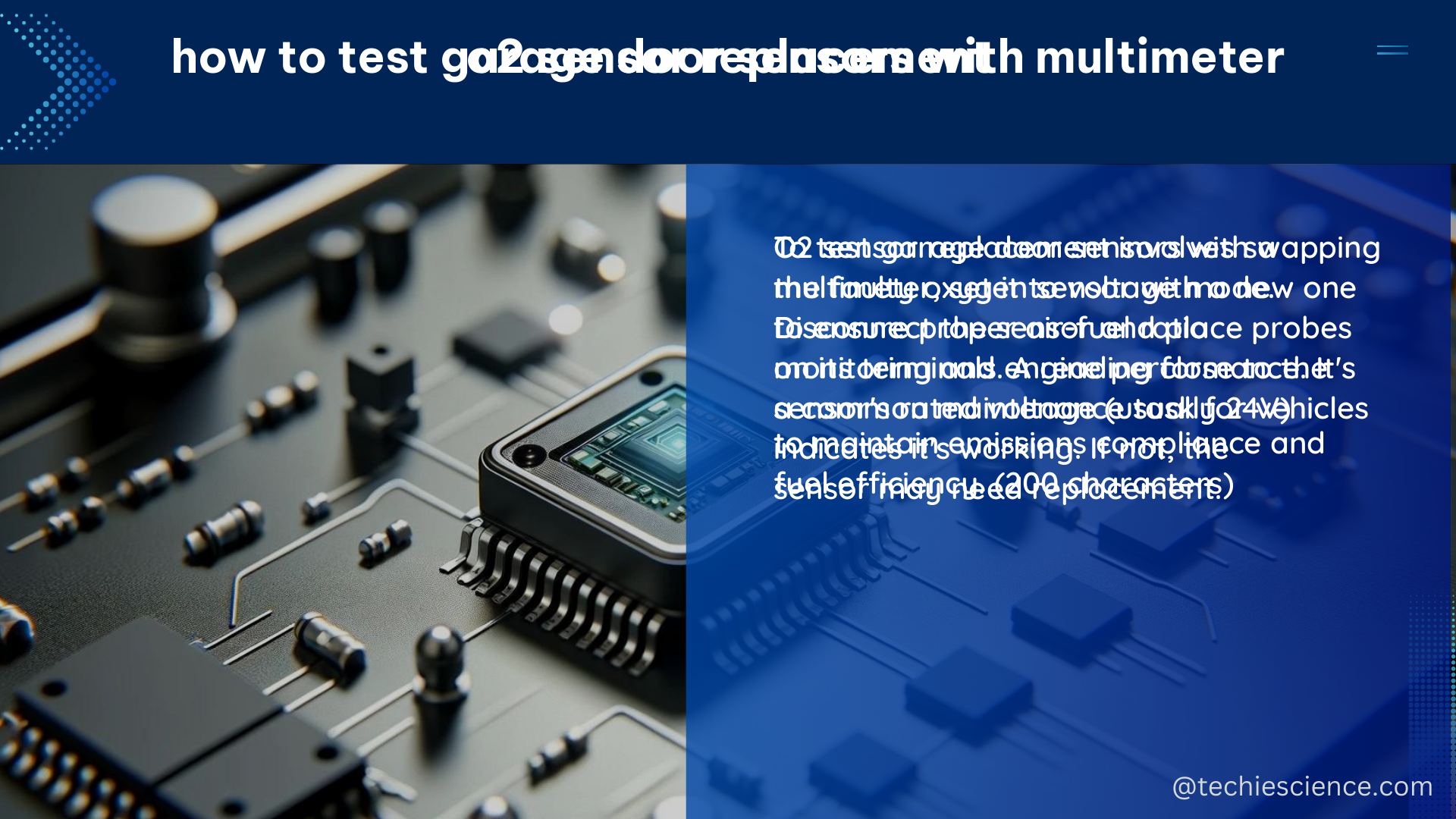The oxygen (O2) sensor is a critical component in modern vehicles, responsible for monitoring the air-to-fuel ratio and providing essential feedback to the engine’s electronic control unit (ECU). Over time, these sensors can degrade, leading to decreased fuel efficiency, increased emissions, and even engine performance issues. Replacing O2 sensors is a crucial maintenance task that ensures your vehicle continues to run at peak efficiency.
Understanding O2 Sensors: Types, Functionality, and Replacement Intervals
O2 sensors come in two primary types: narrowband and wideband. Narrowband sensors report whether the engine is operating at the ideal air-to-fuel ratio of 14.7:1, while wideband sensors can quantify values between 9.65:1 and 20:1, allowing for more precise tuning and optimization.
The replacement interval for O2 sensors varies depending on the vehicle’s age and sensor type:
| Sensor Type | Replacement Interval |
|---|---|
| Unheated 1 or 2-wire (1976 to early 1990s) | 30,000 to 50,000 miles |
| Heated 3 or 4-wire (mid-1980s to mid-1990s) | 60,000 miles |
| OBDII-equipped vehicles (1996 and newer) | 100,000 miles |
It’s important to note that these are general guidelines, and the actual replacement interval may vary based on your vehicle’s make, model, and driving conditions.
Diagnosing a Failing O2 Sensor

While a Check Engine Light (CEL) or diagnostic trouble code (DTC) can indicate a problem with the O2 sensor, the absence of these warnings does not necessarily mean the sensor is functioning correctly. Here are some common symptoms of a failing O2 sensor:
- Stumbling or hesitation during acceleration
- Loss of power or performance
- Misfiring or rough idling
- Increased fuel consumption (running rich)
- Failing emissions tests
If you experience any of these issues, it’s essential to have your vehicle’s O2 sensors inspected and replaced if necessary.
Choosing the Right Replacement O2 Sensors
When selecting replacement O2 sensors, it’s crucial to choose high-quality, OEM-equivalent parts. While Bosch sensors have been criticized for quality issues, Denso sensors are widely regarded as the best option, with performance on par with the original equipment sensors from manufacturers like GM, which can be significantly more expensive.
When upgrading to wideband O2 sensors, keep in mind that this requires replacing the ECU or engine control module (ECM) as well, due to the different signal and programming requirements.
The O2 Sensor Replacement Process: A Step-by-Step Guide
Replacing an O2 sensor is a relatively straightforward task, but it’s essential to follow the proper procedures to ensure a successful installation. Here’s a step-by-step guide:
- Locate the O2 sensor: The sensor is typically located in the exhaust system, either before or after the catalytic converter.
- Disconnect the electrical connector: Carefully unplug the sensor’s electrical connector, taking note of its orientation for proper reconnection.
- Remove the old sensor: Use the appropriate tool (usually a specialized O2 sensor socket) to loosen and remove the old sensor.
- Install the new sensor: Apply a small amount of anti-seize compound to the threads of the new sensor and hand-tighten it into the exhaust manifold or pipe.
- Reconnect the electrical connector: Ensure the connector is securely attached and in the correct orientation.
- Clear any diagnostic trouble codes: Use a diagnostic tool to clear any stored DTCs related to the O2 sensor replacement.
- Perform a test drive: Take your vehicle for a short drive to allow the new sensor to warm up and stabilize, then recheck for any new DTCs.
Remember to always refer to your vehicle’s service manual for specific instructions and torque specifications, as they may vary depending on the make, model, and year of your car.
Maintaining Optimal Engine Performance with Regular O2 Sensor Replacement
Replacing your vehicle’s O2 sensors at the recommended intervals is a crucial aspect of preventive maintenance. By keeping your sensors in good condition, you can enjoy the following benefits:
- Improved fuel efficiency: Properly functioning O2 sensors help the engine maintain the optimal air-to-fuel ratio, reducing fuel consumption.
- Reduced emissions: Well-maintained O2 sensors ensure your vehicle meets or exceeds emissions standards, contributing to a cleaner environment.
- Enhanced engine performance: Accurate O2 sensor data allows the ECU to make precise adjustments, resulting in smoother operation, better acceleration, and increased power.
- Longer engine life: Proper air-fuel mixture control helps prevent engine wear and damage, extending the lifespan of your vehicle’s powertrain.
By following the guidelines and best practices outlined in this comprehensive guide, you can ensure your vehicle’s O2 sensors are replaced at the right intervals, keeping your engine running at peak efficiency and performance.
References:
- How to Tell When It’s Time to Replace O2 Sensors
- Has Anyone Upgraded the O2 Sensors to Wide Band?
- Oxygen Sensors: How They Work & Basic Diagnosis
- When & How Often Do You Replace O2 Sensor(s)?

The lambdageeks.com Core SME Team is a group of experienced subject matter experts from diverse scientific and technical fields including Physics, Chemistry, Technology,Electronics & Electrical Engineering, Automotive, Mechanical Engineering. Our team collaborates to create high-quality, well-researched articles on a wide range of science and technology topics for the lambdageeks.com website.
All Our Senior SME are having more than 7 Years of experience in the respective fields . They are either Working Industry Professionals or assocaited With different Universities. Refer Our Authors Page to get to know About our Core SMEs.